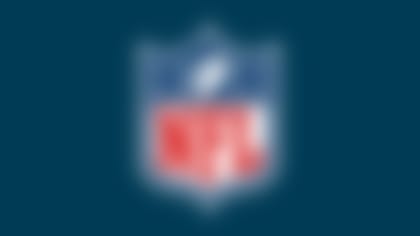In the final week of regular-season play, some teams will opt to rest players for the postseason, other teams will attempt to stay sharp for the playoffs, while some team continue the fight to advance to the playoffs. Elsewhere, there will be coaches trying to save their jobs and finish strong.
With all of the focus on the playoff picture and the accompanying clinching scenarios, we tend to forget about some of the trends in the game. What could be new this time of year? Here's a look.
How did the Wildcat do this season?
By the end of this season, close to 30,000 plays will be called by teams. The Wildcat offense will be called around 300 times, or one percent of the time. That doesn't sound like a big impact on the greater offensive picture in the league, but it was used by 22 teams and averages 4.6 yards per play, created 78 first downs (or, one of four times the Wildcat was used it resulted in a first down) and produced 13 touchdowns (or, one of 22 Wildcat plays finished in the end zone).
Radar defense
One trend that is catching steam is what we used to call "radar defense." It is primarily a passing situation defense where at least nine of the defenders stand around before the snap and refuse to give the offense a look at which players will fill specific gaps. This adds stress to the blocking calls for the offensive line. Last week alone, the Patriots, Browns, Packers and Jets all used the "radar defense."
If it were a down and distance that an offense was willing to run the ball, then they might have a good opportunity to make some yardage. However, in most cases, it's pass-only time and the defense gets the advantage with the "radar defense" disguise. Just like the "Wildcat" offense isn't really anything new and just an extension of the old single-wing offense, the "radar defense" is something I first saw in the late 1960s from Hofstra University under coach Howard "Howdy" Myers. People thought Meyers was crazy, but it worked.
Expect to see more of the "radar defense" in the upcoming playoffs.
Unbalanced line on the move again
The Bengals and Ravens are among a number of teams using unbalanced lines. The most traditional way to get an unbalanced line is by moving a tight end in next to the guard and placing the tackles next to each other on the opposite side. This provides a very good power-running side behind the tackles and it also helps protect a center who is struggling against big nose tackles.
Most teams will line up their defensive front to the middle lineman (player No. 3 on chart), that means the right guard -- not the center -- is the middle lineman and has responsibility for the opponent's nose tackle.
The Bengals and Ravens have had good success with the unbalanced line. The Dolphins also incorporate the unbalanced line with good success in their Wildcat package. All three of these teams are in the top seven in rushing yardage (complete rankings), and the unbalanced line has contributed to that success.
Who has the best inside three?
I had the chance to talk with an NFL line coach about the inside three, better known as the guards and centers on the offensive line, particularly in regard to the teams headed to the playoffs. The coach's main points about the importance of the inside three was establishing a pocket for the quarterback and for creatign holes for an inside running game. The conversation was spurred by the Eagles' loss of starting cetner Jamaal Jackson. The injury to Jackson will be a major problem for the Eagles moving forward. Guard Nick Cole will move over to center and will have to block the Cowboys' Pro Bowl defensive tackle Jay Ratliff in Sunday's showdown for the NFC East title.
The Bengals have a remarkable story with their inside three, which consists of two street free agents -- Evan Mathis and Kyle Cook -- along with a veteran in Bobbie Williams. If you watched the Bengals' running game, you will see why they were rated so high this season.
To me, the Saints' inside three was the most impressive, with fifth-round pick Carl Nicks and fourth-round pick Jahri Evans at the guard spots and Jonathan Goodwin at center. Those three helped buuld a tight pocket for Drew Brees to throw out of and really opened up the inside running game.
Penalties and playoff teams
One head coach said to me this week that it seems to be that good teams usually have a lot of penalties. I'm not sure that I buy into that logic, but I can see how acts of aggression can lead to penalties, but that can also kill a Super Bowl run in the playoffs.
Well, four of this season's top five most-penalized teams are all playoff contenders. Those teams are the Packers (ranked No. 2 in the league with 128 penalties), the Eagles (No. 3, 126 penalties), the Bengals (No. 4, 124 penalties) and the Ravens (No. 5 with 119 penalties). The Cowboys and Vikings are also ranked in the top 10 in penalties.
I took a look at the Super Bowl champions since 2000 and how those teams ranked in the penalty department. Since 2000, the Super Bowl-winning teams on average ranked 20th in penalties, with the 2005 Steelers the best-ranked (No. 30) and the 2008 Steelers as the worst-ranked (No. 7).



